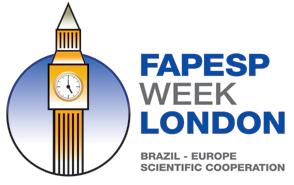Three-dimensional memory in the evolution of electronics
Team from the University of Cambridge, led by Russell Cowburn, uses the emerging technology of spintronics to develop the chips of the future
By Heitor Shimizu, in London
Agência FAPESP – In the search for ever more powerful electronic devices, one component stands out in particular: the processor. The “brain” of computers, cell phones, tablets, cameras and other digital devices, the chip is constantly challenged to be faster while handling ever increasing amounts of information. If it were human, it would be a cross between Usain Bolt and Albert Einstein.
Today’s processors handle information in a type of memory known as random access (RAM), in which digital information flows in two dimensions. But what if it were three-dimensional? The information would pass not only through the X and Y axes of a graph, but also through the Z axis. It would be like going from the ground floor of a cottage to a multi-story building.
And it is precisely this proposal that has motivated research by the team led by physicist Russell Cowburn at the Cavendish Laboratory of the University of Cambridge in the United Kingdom. Cowburn was one of the speakers on September 27, the final day of FAPESP Week London, a symposium held at the Royal Society in London.
According to Cowburn, by evolving to a 3-D platform, chips could significantly increase the performance of electronic devices.
Better, but not bigger. In going from one layer to several, the chips would not increase in size, which is another concern of the electronics industry.
“A typical microchip is about one millimeter thick, but the interesting things really take place on the thinnest of layers that measure only one micrometer (one millionth of a meter) on the top. This means that only one thousandth of today’s chips are used for ‘intelligent’ functions. The rest is packaging and support,” Cowburn told Agência FAPESP.
“Even if we consider today’s chips, there is a potential for putting on tens, hundreds or even thousands of layers without having to change the size of the device,” the scientist went on to say.
If it appears complicated in theory, it is even more so in practice. In order to transform the results of research done in Cambridge into market technologies, changes will also have to be made to basic electronics function.
“We need to learn, for example, how to dissipate the heat inside the three-dimensional chip. We also have to figure out how to work with the information flow and the speed. My view is that we need new basic levels, new physical principles to be able to take advantage of the 3-D architecture. We can’t just build today’s electronic circuits in 3-D,” Cowburn said.
While other laboratories have researched successors to silicon for the chips of the future, Cowburn’s group has preferred to use a hybrid alternative.
“We use silicon on the bottom, with the conventional microelectronics. And then on the top, we have the parts that handle the processes, which in our case, is spintronics,” he said.
Spintronics is an emerging technology – already found in commercial devices – that exploits the spin (orientation) of the electrons and the magnetic moment associated with it, in addition to the electrical charge (the basis for traditional electronics).
“We are a physics lab. At the moment, we are exploring new methods to allow information to pass atom by atom in a dimension that is currently unused,” explained Cowburn.
The British physicist has won awards such as the GSK Westminster Medal and Prize, the Degussa Science to Business Award, the Hermes International Technology Award and the Institute of Physics Paterson Medal and Prize. Cowburn holds more than 60 patents, is the founder of two start-up companies and invented laser surface authentication technology (LSATM).
In addition to Cowburn, the session on Nanotechnology included speakers Marcelo Knobel, Thoroh de Souza and Paul O’ Brien. Kn
obel, scientific coordinator of FAPESP Week London, is professor at the Physics Institute of the University of Campinas (Unicamp), where he leads a team that conducts research on magnetic materials at the Materials and Low Temperatures Laboratory. He discussed the basic concepts of nanomagnetism at the London symposium.
Souza talked about the Center for Advanced Graphene, Nanomaterials and Nanotechnology (MackGrafe) at Mackenzie Presbyterian University in São Paulo, which, with funding from FAPESP, is expected to open in 2014.
The MackGrafe will have the task of developing products that generate patents, licenses and royalties for the institution in which it is housed. “One of our reasons for attending FAPESP Week was to seek out new sources of collaboration,” said Souza.
The final speaker was Paul O’Brien, professor at the University of Manchester and founder of Nanoco Technologies, who spoke about marketing nanotechnology.









